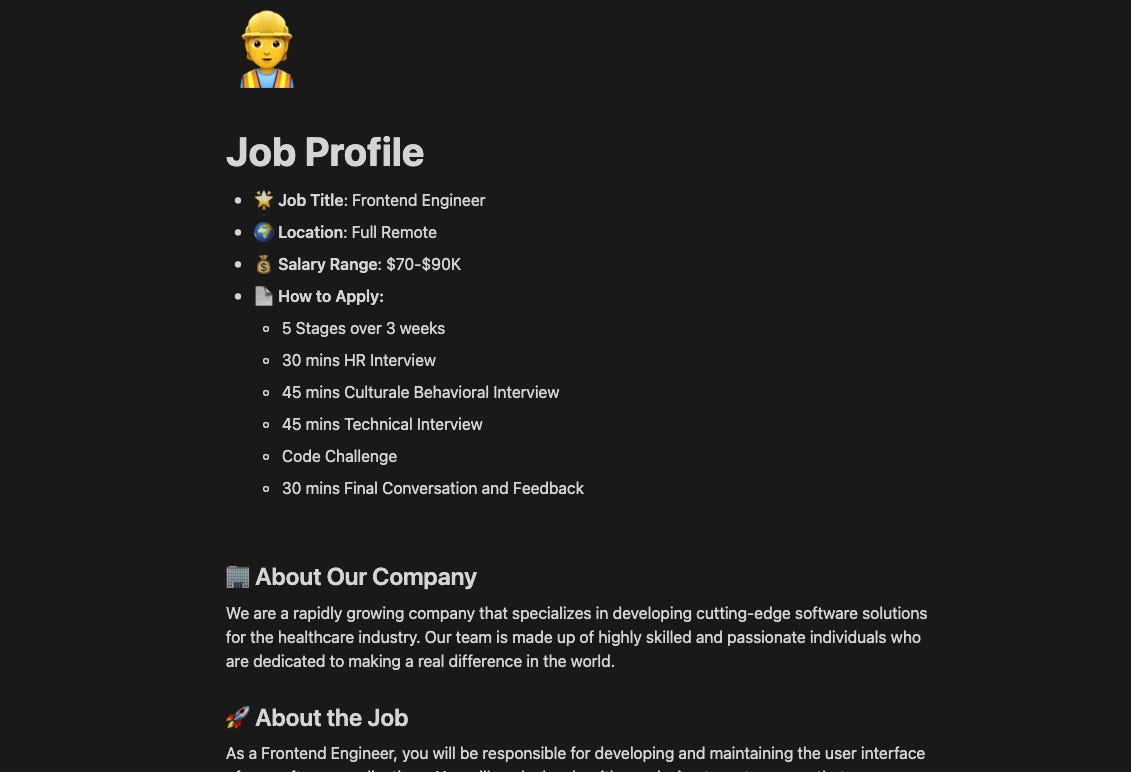Creating a Great Engineering Hiring Process
A Comprehensive Guide for Engineering Managers to Perfect the Hiring Process to Build Your Team
As an Engineering Manager, one of your most crucial and challenging tasks is to build a highly effective engineering team.
Whether you're new to managing engineering teams or have been doing it for a while, in today's competitive job market, finding and hiring the right people with the necessary skills, offering fair pay, and ensuring they fit well with your team's culture can be quite a task.
In a previous essay, I discussed hiring in more holistic way. Today, as we continue going through The Good Engineering Framework, we'll focus on the practical aspects that make up a strong hiring process.
Specifically, we'll cover:
🧐 What a Hiring Process is and Why It Matters
🛠️ How to Create an Effective Hiring Process (🎁 Template included!)
💡 Useful Tips to Improve the Experience
We have a lot to go through, so let's get started!
🧐 Understanding the Hiring Process
The hiring process, also known as the recruitment process, often refers to a structured and systematic approach that organizations use to identify, attract, evaluate, and ultimately select candidates for employment.
In the engineering field, this process has gained tremendous importance due to high competition and the constant demand for top tech talent. Depending on the company's size and culture, in some cases, it has become a true experience.
Person-Environment Fit
The Person-Environment Fit theory helps us understand why the hiring process becomes critically important when we decide to expand our teams.
This theory states that congruence or a match between individuals and their work environment leads to better outcomes for both the individual and the organization.
The concept of "fit" in this theory can be understood in various ways, and over the years, psychologists have identified different subtypes of it. Let's explore some of the most well-known:
Person-Vocation Fit: This occurs when a person's interests, preferences, and personality align well with a specific job or career.
Person-Job Fit: This takes place when a person's knowledge and skills match the requirements of a job.
Person-Organization Fit: This relates to how well a person's beliefs and personality match with the company's culture and values.
Person-Group Fit: This focuses on how well a person fits within their team.
Person-Supervisor Fit: This happens when a person aligns well with their manager's approach and expectations.
Although there's often a tendency to prioritize Person-Job fit, a well-executed hiring process that considers all five types of fits can increase the likelihood of hiring candidates who will stay with your organization for a long time.
🛠️ Creating the Ideal Process
Although there are several necessary steps to create an effective hiring process, there is no one-size-fits-all framework, and each phase could vary based on numerous variables. I assume your company already has an HR team or department to assist you in this phase, but it's important to note that not all of these steps necessarily require their involvement. However, be prepared for additional work if you choose to handle them yourself.
Based on my own experience, here are the main steps for a strong hiring process:
Job Analysis
Crafting a Job Description
Resume Evaluation
Initial Screening
Behavioral and Cultural Fit Interview
Technical Interview
Code Challenge
Offer and Negotiation
While all of these steps are crucial, I will also assign a relevance score to each of them. Please keep in mind that this is based on my personal preference, and the importance of each phase may vary for different individuals. Let's explore them one by one.
Job Analysis
This is where the hiring process officially starts. You may find yourself in need of additional workforce, lacking certain internal skills, or creating an entirely new role, prompting you to initiate the recruiting process.
The output of this phase should be a concise document outlining your requirements for the position you are opening.
🌟 RELEVANCE: 3/5 🟡🟡🟡⚪️⚪️
💡 TIPS:
Be absolutely certain that a new hire is necessary, and you are not merely attempting to fix a broken process by adding a new person.
Determine the precise skills, experiences, and traits required for the position.
Outline key responsibilities and performance expectations.
Job Description Crafting
In this crucial step, based on the insights gained from the Job Analysis, you need to create a job description that captures the attention of potential candidates and aligns with your team's requirements. For your convenience, I've created a straightforward Notion template to serve as a foundation. It goes without saying that you'll need to tailor it to your specific requirements, adding or removing elements based on your organization's needs.




